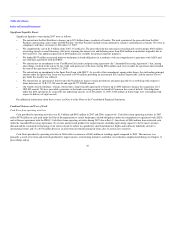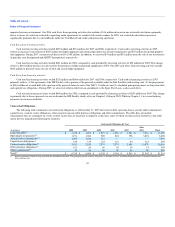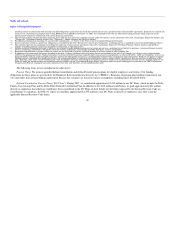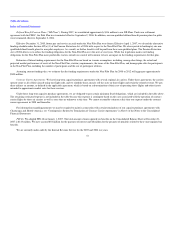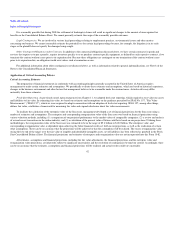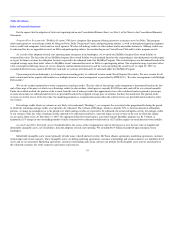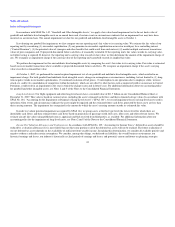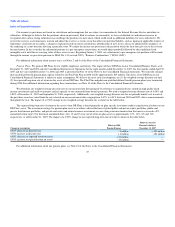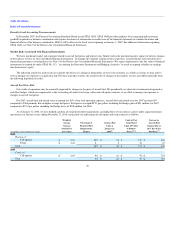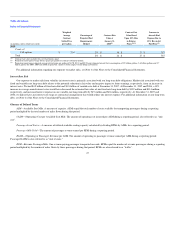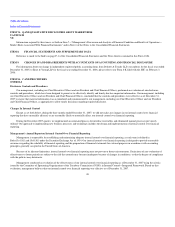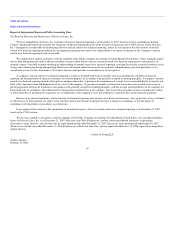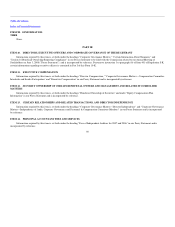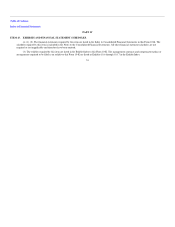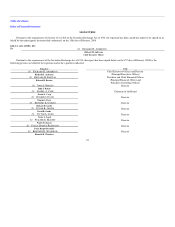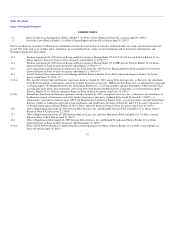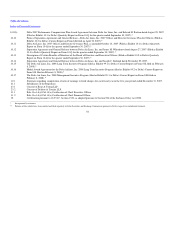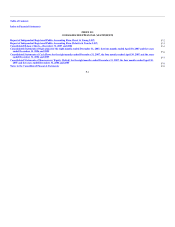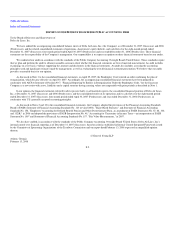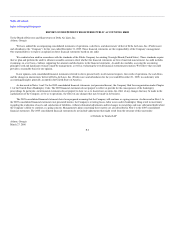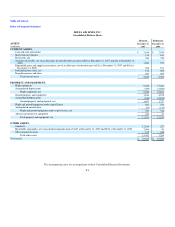Delta Airlines 2007 Annual Report Download - page 53
Download and view the complete annual report
Please find page 53 of the 2007 Delta Airlines annual report below. You can navigate through the pages in the report by either clicking on the pages listed below, or by using the keyword search tool below to find specific information within the annual report.
Table of Contents
Index to Financial Statements
ITEM 7A. Q
UANTITATI
VE
AND QUALITATIVE DISCLOSURES ABOUT MARKET RISK
Information required by this item is set forth in Item 7—"Management's Discussion and Analysis of Financial Condition and Results of Operations—
Market Risks Associated With Financial Instruments" and in Note 4 of the Notes to the Consolidated Financial Statements.
ITEM 8. FINANCIAL STATEMENTS AND SUPPLEMENTARY DATA
Reference is made to the Index on page F-1 of the Consolidated Financial Statements and the Notes thereto contained in this Form 10-K.
ITEM 9. CHANGES IN AND DISAGREEMENTS WITH ACCOUNTANTS ON ACCOUNTING AND FINANCIAL DISCLOSURE
For information about our change in independent registered public accounting firms from Deloitte & Touche LLP, our auditors for the fiscal year ended
December 31, 2005, to Ernst & Young LLP for the fiscal year ending December 31, 2006, please refer to our Form 8-K filed with the SEC on February 3,
2006.
ITEM 9A. C
ONTROLS AND PROCEDURES
Disclosure Controls and Procedures
Our management, including our Chief Executive Officer and our President and Chief Financial Officer, performed an evaluation of our disclosure
controls and procedures, which have been designed to permit us to effectively identify and timely disclose important information. Our management, including
our Chief Executive Officer and our President and Chief Financial Officer, concluded that the controls and procedures were effective as of December 31,
2007 to ensure that material information was accumulated and communicated to our management, including our Chief Executive Officer and our President
and Chief Financial Officer, as appropriate to allow timely decisions regarding required disclosure.
Changes In Internal Control
Except as set forth below, during the three months ended December 31, 2007, we did not make any changes in our internal control over financial
reporting that have materially affected, or are reasonably likely to materially affect, our internal control over financial reporting.
During the December 2007 quarter, we implemented an automated process for interline receivables and eliminated manual processes previously
utilized. Our approach to implementing new business processes and technology includes the design and implementation of internal control over financial
reporting.
Management's Annual Report on Internal Control Over Financial Reporting
Management is responsible for establishing and maintaining adequate internal control over financial reporting, as such term is defined in
Rules13a-15(f) and 15d-15(f) under the Securities Exchange Act of 1934. Our internal control over financial reporting is designed to provide reasonable
assurance regarding the reliability of financial reporting and the preparation of financial statements for external purposes in accordance with accounting
principles generally accepted in the United States of America.
Because of its inherent limitations, internal control over financial reporting may not prevent or detect misstatements. Projections of any evaluation of
effectiveness to future periods are subject to the risk that controls may become inadequate because of changes in conditions, or that the degree of compliance
with the policies may deteriorate.
Management conducted an evaluation of the effectiveness of our internal control over financial reporting as of December 31, 2007 using the criteria
issued by the Committee of Sponsoring Organizations of the Treadway Commission (COSO) in Internal Control—Integrated Framework. Based on that
evaluation, management believes that our internal control over financial reporting was effective as of December 31, 2007.
48


